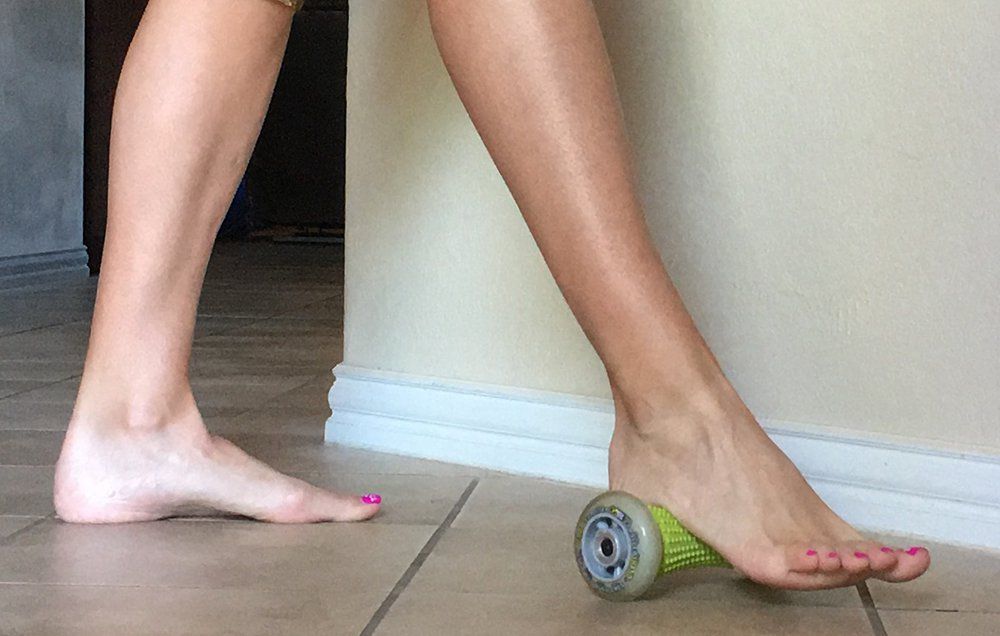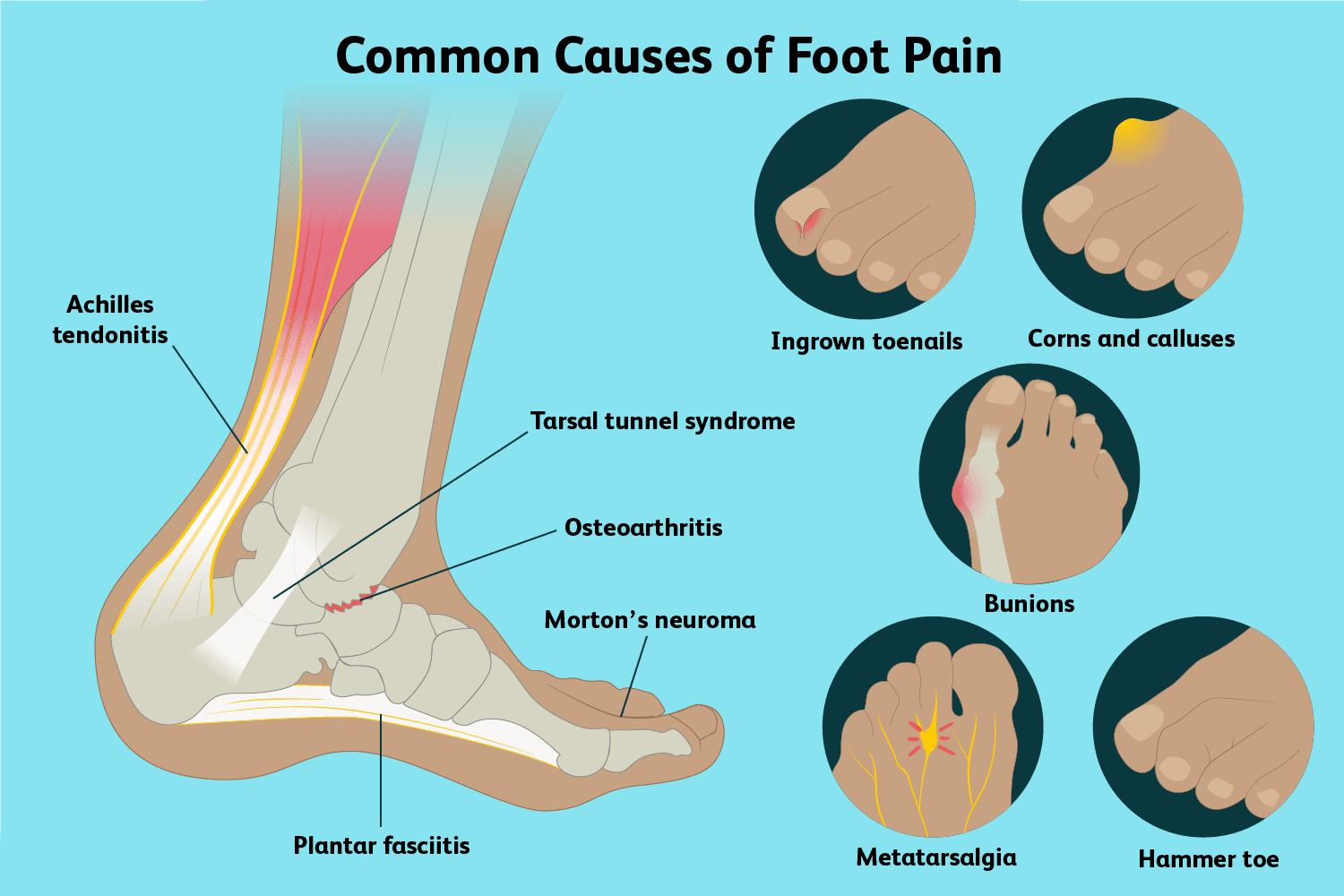Exercise Daily – Tendons are one of the most important structures in the body. They connect muscles to bones, and they play a critical role in many daily activities. Here is a question, How to Heal a Tendon in your Foot at home? We discuss a few methods to heal a tendon. When they go wrong, tendon injuries can be quite painful and debilitating. Fortunately, there are a few things you can do to heal a tendon in your foot at home. In this blog post, we will outline the best exercises for doing just that. By following these exercises, you can speed up the healing process and get back to your life as quickly as possible.
If you have a tendon injury in your foot, there are a few things that you can do to help heal the tendon and get it back to normal function. One of the best exercises for healing a tendon is eccentric exercise. Eccentric exercise is when you use resistance against the muscle to cause it to contract (shorten) and then relax. This type of exercise is good because it helps to improve blood circulation and also increases strength and size in the muscle.
To perform eccentric exercise on your foot, start by standing on one leg with the other knee bent slightly. Hold onto something stable, like a railing or stair rail, and slowly lower your body down towards the floor. Keep your back straight, and ensure that your gastrocnemius (the muscle in your calf) does not fatigue from this type of exercise too quickly. Gradually increase the resistance as you progress until you reach failure; failure means that you cannot complete another repetition without stopping due to muscular fatigue. After completing the set, rest for several minutes before repeating.
Tendon Injury Causes and Solutions
If you injure your Achilles tendon, there are a few things that you can do to help speed up the process of healing. To start with, make sure to elevate the injured area as much as possible. This means if you have a heel injury, try to elevate it as much as possible by putting pillows or a blanket underneath it. If you have an ankle injury, elevate it using a rolled-up towel or two. Secondly, make sure to drink plenty of fluids and eat nutritious foods. This will help nourish the tissue and promote healing. Finally, take some pain-relieving medication and rest as much as possible.
Have you ever had that nagging pain in your foot? Maybe it started after a long day at work, or maybe you woke up with a really sore foot the next morning. There’s no telling what might be causing that pain, but there’s one thing for sure: it needs to be fixed as soon as possible. If you’re looking for some effective tendon exercises at home to help relieve that pain, look no further. In this blog post, we will recommend four exercises that target the Achilles tendon and other tendons in the foot. Each exercise is designed to help restore normal function and reduce pain. So whether you’re dealing with a chronic issue or just experiencing some stiffness, these exercises can help you get back to your life.
Best Tendon in Foot exercises at home
The best tendon in foot exercises at home is the Achilles tendon. The reason is that this tendon is a strong and elastic muscle that connects your calf to your heel. When you do this type of exercise, you are working both the calf and the Achilles tendon.
This type of exercise is also effective for preventing injuries to the Achilles tendon. By doing these exercises regularly, you can help keep the tendon healthy and flexible. Another good tendon in foot exercise is the soleus muscle. This muscle helps support your ankle joint and helps rotate your leg when you walk or run. Also, read How to Adjust Your Own Back.

Types of tendonitis
There are several types of tendonitis. You need to know all about tendons and then know How to Heal a Tendon in Foot. The most common is overuse or repetitive microtrauma to the tendon, which can be caused by a number of different activities, including running, jumping, and lifting weights. Other causes of tendonitis include:
- Tennis elbow
- Golfers’ elbow
- Rheumatoid arthritis
- Osteoporosis
- Quadriceps tendonitis
Overuse tendinitis can develop slowly over time, or it can happen suddenly as a result of an injury. Symptoms may include pain and tenderness in the area around the injured tendon, swelling, and decreased range of motion. Treatment usually involves rest and NSAID medication if necessary. If the condition is severe, surgery may be required.
Causes of tendonitis
Tendonitis can be caused by various factors, the most common of which are overuse and lack of exercise. The tendon runs along the length of the muscle and is surrounded by a tough sheath. This sheath can become inflamed if you use your muscle too much or if you do not exercise enough. Tendonitis can also be caused by other injuries to the area around the tendon, such as a sprain.
How to treat tendonitis at home
If you are experiencing tendonitis, the best way to treat it at home is with a combination of stretches, exercises, and medications. Here are three simple stretches that can help:
1. Hamstring Stretches: To stretch your hamstrings, lie flat on your back with feet flat on the floor and arms at your sides. Curl your toes under, pull your heels towards your butt, and hold for 30 seconds.
2. Quadriceps Stretch: Standing with feet shoulder-width apart, lift one leg up until it is parallel to the floor, then lower it slowly back down. Hold for 30 seconds, then repeat with the other leg.
3. Calf Stretch: Lie on your stomach with your legs bent and feet flat on the floor. Place hands behind your head and press down into the heel of each foot to make a 90-degree angle. Hold for 30 seconds, then release and repeat on another side.

Foot Anatomy: The Five Muscles of the Foot
The five muscles of the foot are the Plantar fascia, Gastrocnemius, Soleus, Tibialis anterior, and Tibialis posterior.
The plantar fascia is a thin sheet of connective tissue that runs from the heel to the front of the arch of the foot. It helps support the arch and contributes to a sense of balance as you walk.
The gastrocnemius muscle is located on top of the heel and attaches to the Achilles tendon. This muscle helps you lift your heel off the ground and helps you move your leg forward.
The soleus muscle is located just below the gastrocnemius muscle and attaches to both the tibia (the main bone in your lower leg) and fibula (a small bone in your lower leg). This muscle helps you move your ankle joint and also contracts when you step down hard on a surface.
The tibialis anterior is located on top of your shinbone and attaches to both bones in your lower legs—the femur (thigh bone) and tibia. This muscle helps you lift your foot off the ground when you take a step, as well as control how much your toes bend when you walk or run.
The tibialis posterior is located at the bottom of your shinbone and attaches to both bones in your lower legs—the femur (thigh bone) and fibula. This muscle helps you.

Testing for Tendinitis
If you have tendonitis, the pain you feel is likely due to inflammation and swelling in the tendon. You can relieve the symptoms by following a few simple steps. First, ice the area for 20 minutes every day for two to four days. This will help reduce inflammation. Second, take an over-the-counter anti-inflammatory medication such as ibuprofen or naproxen as directed. Lastly, exercise the muscle that is causing the pain and stretch the tendon until it feels less tight. Must check Snapping Hip Syndrome Exercises.
The Treatment of Tendinitis: Rest, Ice, Physical Therapy, and Surgery
Tendinitis is a condition that results when the tendon becomes inflamed. The most common cause of tendinitis is overexertion or overuse. Treatment depends on the severity of the condition. Rest, ice, physical therapy, and surgery may be necessary.
Rest: If the tendinitis is mild, rest may be all that is necessary. If the tendinitis is more severe, however, rest may not be enough to heal it. In this case, patients may need to take anti-inflammatory medication to reduce swelling and pain. They may also need to take ice packs or cold baths to reduce inflammation and pain.
Ice: Applying ice to a tendon can help reduce inflammation and pain. Ice can be applied directly to the area where the tendinitis is painful, or it can be placed on a bandage or wrap that covers the area. It should be applied for 15 minutes at a time, several times per day.
Physical Therapy: Physical therapy can help improve the range of motion and flexibility in the area affected by tendinitis. This will help reduce inflammation and pain in the tendon area. Physical therapy should be started as soon as possible after symptoms appear in order to maximize healing potential.
Surgery: Surgery may be necessary if physical therapy fails to heal the tendon or if symptoms continue after rest, ice, and physical therapy have been tried. Surgery might involve removing part or all of the injured tendon.
Conclusion
As we age, our tendons can become less elastic and less able to withstand the demands of daily activities. So you need to know How to Heal a Tendon in your Foot at home. Fortunately, there are a few simple exercises that you can do at home to help improve your tendon health and make it easier for you to stay active throughout the years. By regularly incorporating these exercises into your routine, you can help keep your tendons strong and flexible as you get older, which will certainly benefit your overall well-being.
If you injure the tendon in the foot, it is important to seek medical help right away. However, if the injury is mild, you can heal the tendon at home. To do this, follow these steps:
1. Rest the injured foot as much as possible. You should not put any weight on the injured foot for at least four days to allow swelling to subside and speed up healing.
2. Elevate the injured foot using an elevated pillow or an elevated stool as much as possible during the day and at night when you sleep.
3. Apply ice packs wrapped in a cloth to the injured area twice daily for 20 minutes each time. Make sure that ice does not get into your eye or nose because it could cause frostbite or frostnip injuries respectively.
4. Take ibuprofen (such as Advil) if pain arises after applying ice packs or if walking results in severe painkillers being needed regularly throughout the day or night due to inflammation of tendons around the navicular bone (the large bone just below your heel).



